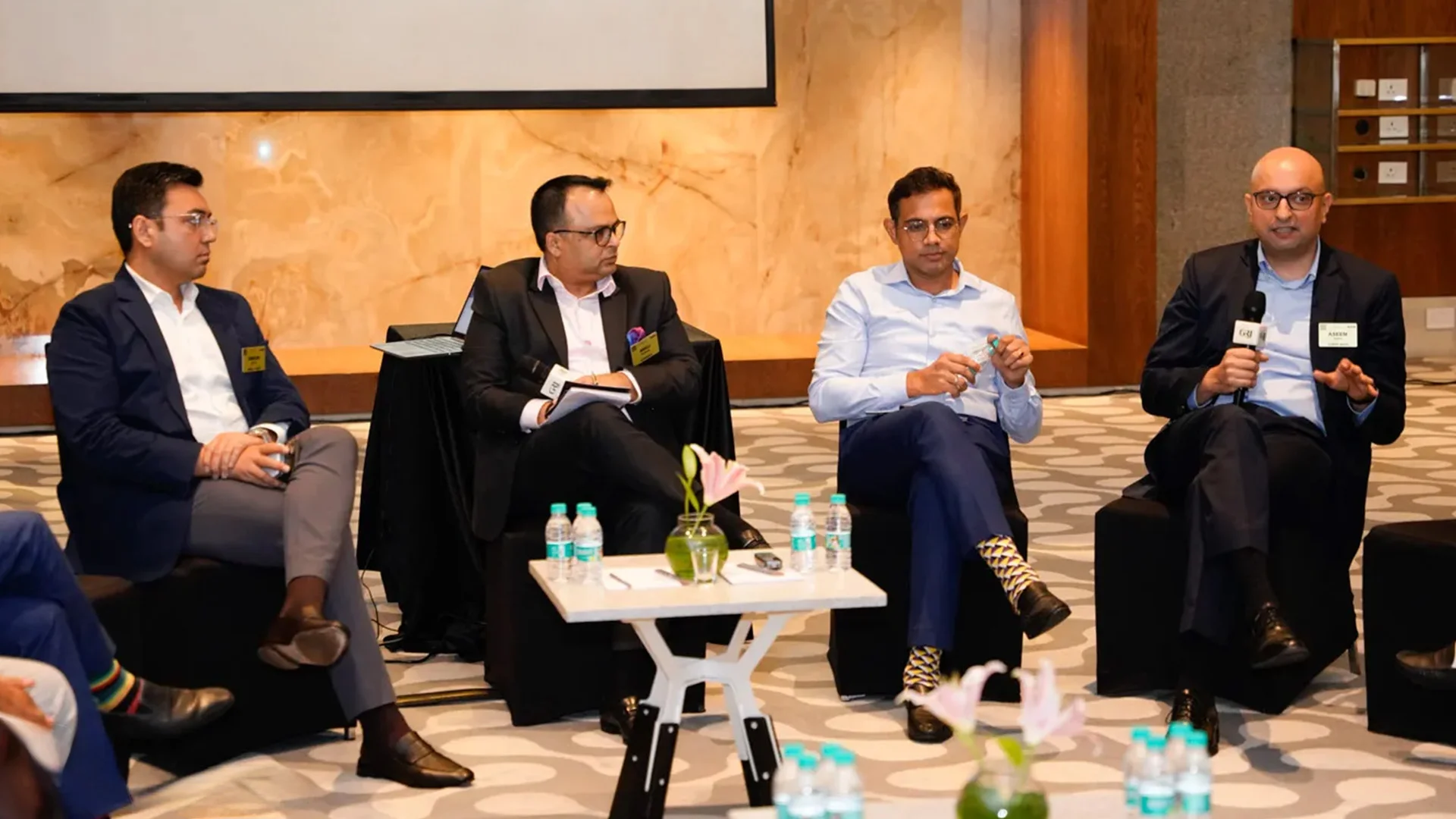 GRI Institute
GRI InstituteHyderabad has 'emerged' - What's next?
Key insights from the GRI Hyderabad RE Forum on the new rules of capital, discipline, and diversification in a post-boom market
Written by Jorge Aguinaga
Hyderabad's real estate market, once known for its historical legacy, is now at a remarkable inflection point, emerging as one of the world's most dynamic urban innovation hubs. Our inaugural event in the city, the GRI Hyderabad Real Estate 2025 Forum, co-hosted by Upwisery, convened the most influential developers, investors, and capital market experts to address this transformation.
A compelling picture emerged of a market at scale, fuelled by over USD 60 billion in foreign direct investment (FDI) since the early 2000s, with nearly half of that capital flowing in just the last five years.
Despite this growth, listed real estate still accounts for less than 1% of India's total listed market, highlighting a massive, untapped opportunity. This potential is underscored by the NIFTY Realty Index, which has outperformed the broader NIFTY50 and NIFTY500 indexes over the last decade, signaling strong investor confidence.
This strong performance in the public markets has created a compelling case for developers to list, which naturally led to the central debate of the day: the trade-off between public and private capital.
While public markets currently offer the cheapest source of funding due to high valuations, the conversation revealed that this path comes with significant challenges.
The lower cost of capital for listed companies is not merely due to their public status but is a direct result of their superior financial performance, particularly more aggressive ROEs (return on equity).
Conversely, the strategy of remaining private was presented as a powerful alternative. A private structure allows a company to "think generationally" and navigate market cycles without the immense pressure of short-term shareholder expectations.
This sentiment was echoed in the discussion around private capital, which offers greater operational flexibility - a crucial advantage for developers who often prefer to resolve issues like minor defaults through direct negotiation rather than triggering immediate and damaging public reporting.

The day began by delving into the capital markets with a presentation from Mr. Anuj Kapoor, Founder & MD of Upwisery. (GRI Institute)
What are investors looking for?
A clear and demanding profile of the ideal operator emerged from the discussions. Insights from leading investors and capital market experts made it evident that in today's mature market, institutional capital is backing proven operators, not just promising projects.
A key theme was the importance of resilience over rapid growth. The panellists agreed that a developer who has successfully weathered at least one market down cycle, such as the tough period between 2012 and 2021, is considered a far more attractive partner than one who has only experienced the recent boom.
This battle-tested experience is seen as a critical indicator of a team's ability to navigate future challenges. Beyond resilience, a clear track record of execution is non-negotiable.
The consensus pointed to a tangible benchmark: a developer should have a delivered portfolio of at least 8-10 million square feet and a forward-looking pipeline of another 10-15 million square feet to present a compelling narrative for large-scale funding or a potential IPO.
However, a significant hurdle remains for many regional players: the governance gap. The experts warned that many firms, often family-run, lack the disciplined financial structures and robust corporate infrastructure required by public markets. Issues that are manageable while private - such as unsecured related-party loans or pending litigation - become major red flags under public scrutiny.
As one investor bluntly put it, these gaps in financial discipline will "butcher" a company's valuation during an IPO process, as public markets have a strict demand for transparent and strong financial ratios, such as ROEs and solid interest coverage ratios.

The panel urged a strategic shift away from overdependence on IT and pharma, and a move beyond the "herd mentality" to capitalise on high-growth asset classes. (GRI Institute)
From liquidity to long-term strategy
The discussion also tackled the critical topic of market liquidity, revealing a landscape that is both opportunity-rich and complex. The consensus among investors and developers was that while significant capital is available, its accessibility is far from uniform across the sector.
Evidence of high liquidity is clear at the top end of the market, with experts pointing to the nearly 80 land deals worth about INR 30,000 crore completed in the last 6-9 months as a strong indicator that capital is readily available for the right developers.
This trend is mirrored in the public markets, where "excess liquidity" is fuelling a rise in residential IPOs, and in the commercial sector, where REITs are a primary engine of liquidity.
However, the conversation also highlighted significant challenges. One panellist offered a sharp critique of the Indian REIT structure, arguing that it faces a "fundamental issue" of negative spread, where rental yields are often lower than borrowing costs.
Furthermore, while liquidity is strong for REIT-grade assets, the primary challenge for other segments is not the absence of capital but the "difficulty in accessing it.
This complex market landscape led to the ultimate conclusion of the forum: Hyderabad has officially graduated from an "emerging" to an "emerged" market, and its future success demands a strategic pivot.
Panellists warned against the risk of overdependence on the IT and pharma sectors, urging a move beyond the "herd mentality" of chasing only the most popular asset classes.
They agreed that future-proofing the market requires demand diversification and a focus on untapped sectors like data centres, senior and assisted living, and the hospitality sector.
The forum concluded that Hyderabad's next phase of growth will be defined not by speed, but by strategy - an insight driven by the complex interplay between available capital, developer expectations, and a diversified asset focus.